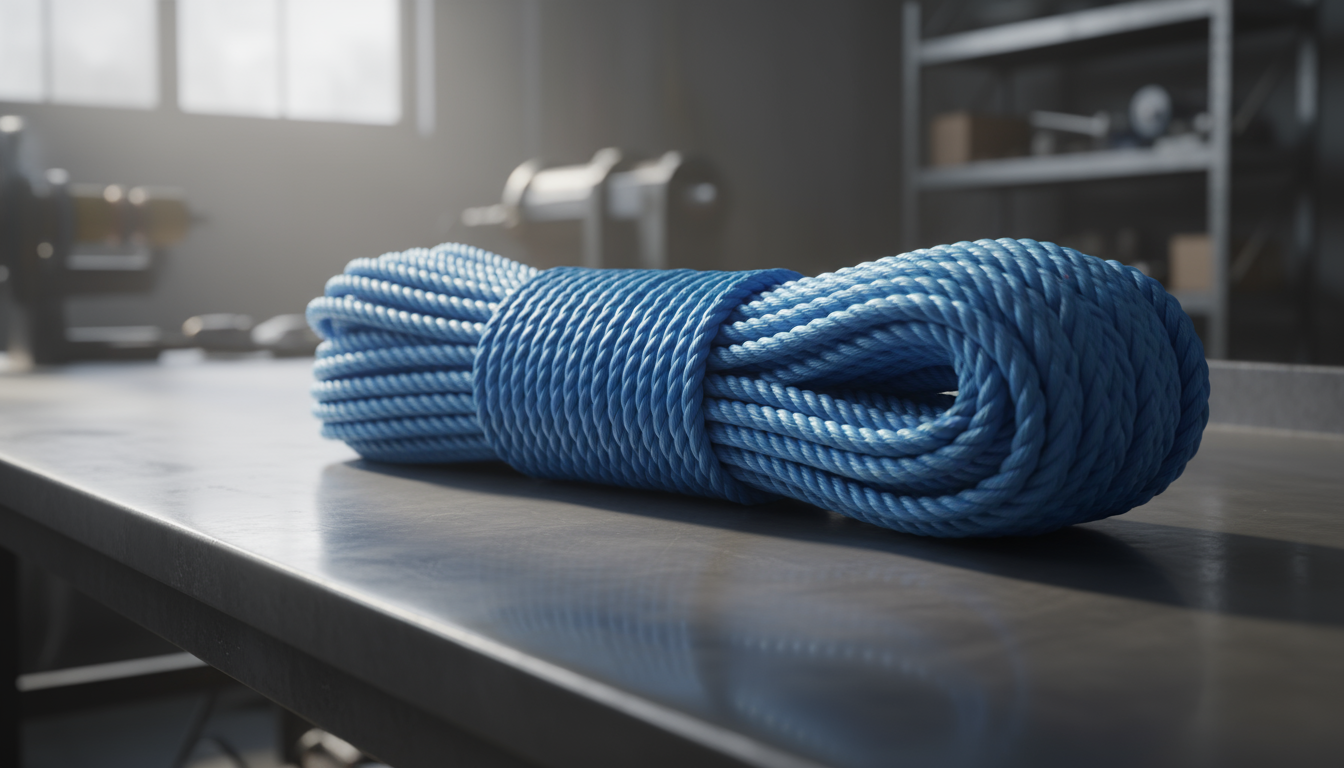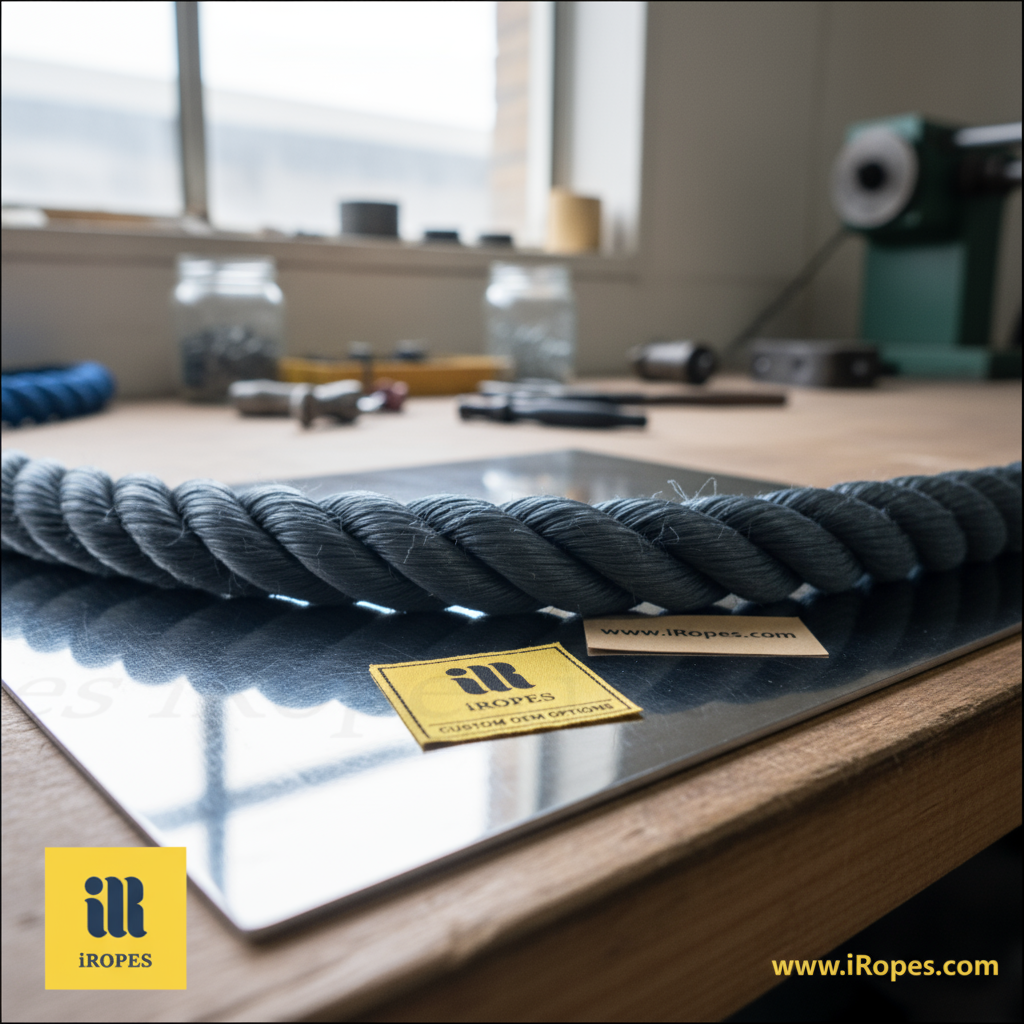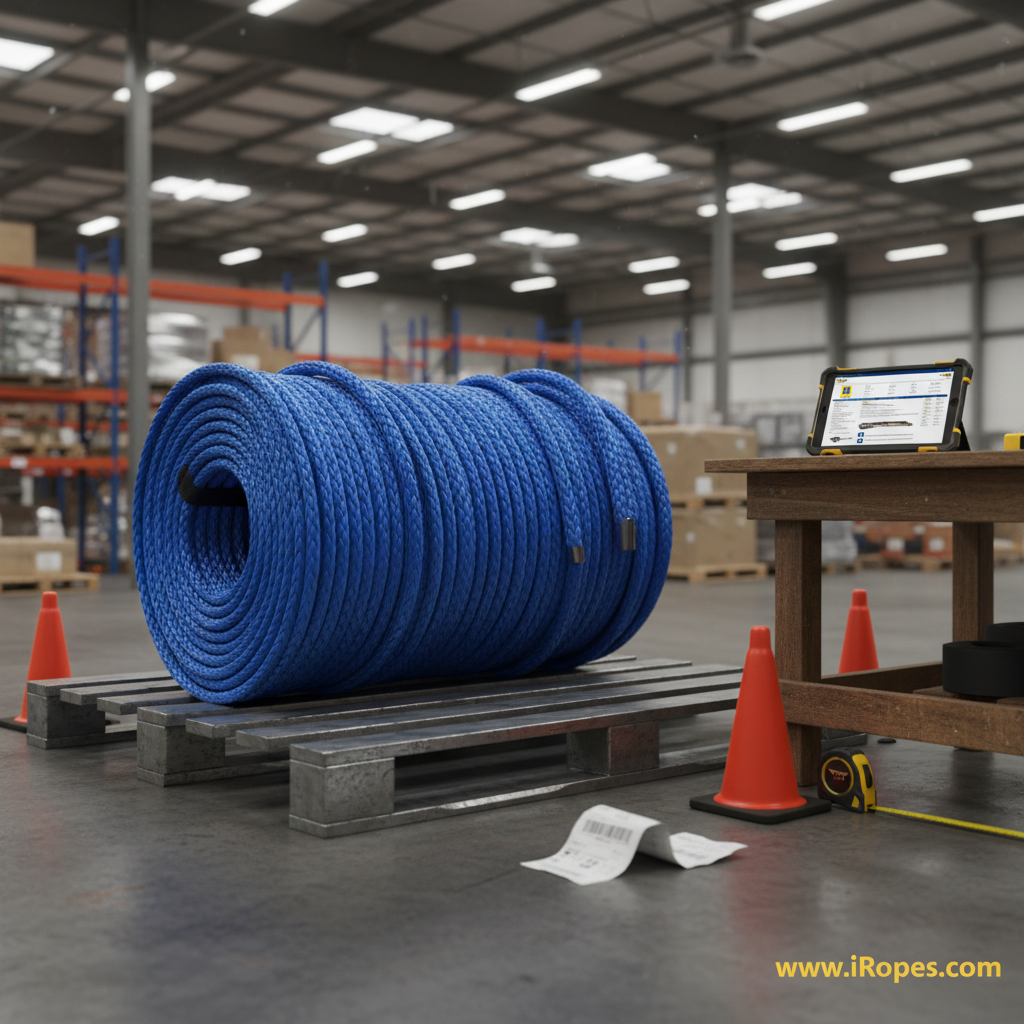1‑inch Manila rope ≈ 8,100 lb breaking strength; 3‑inch HMPE ≈ 45,000 lb; 4‑inch HMPE ≈ 70,000 lb – all ISO‑9001 certified.
≈2 min read – What you’ll gain
- ✓ Choose the optimal material and boost strength up to 870 % versus standard nylon.
- ✓ Cut lead‑time by as much as 3.4 days with our streamlined OEM/ODM workflow.
- ✓ Secure full IP protection, eliminating design‑theft risk for every custom rope.
- ✓ Achieve on‑time global pallet delivery 96.7 % of the time.
Most operators believe that stepping up from a 1‑inch to a 3‑inch rope inevitably sacrifices manoeuvrability. However, iRopes’ precision‑braided construction maintains the flexible feel of a slimmer line while unlocking up to 2.8 times the working load limit. Are you curious how our custom cores and low‑stretch cores achieve such a balance? The sections ahead reveal the material science, calculation shortcuts, and custom-branding options that allow you to choose the perfect diameter without compromising speed or safety.
Understanding the 1 inch diameter rope: Basics and Benefits
Building on the discussion of why rope diameter matters, the 1 inch diameter rope emerges as a versatile workhorse for many light-duty yet demanding tasks. Its nominal 25 mm size strikes a balance between manageable handling and respectable load capacity, making it a common choice in both industrial and marine environments.

When selecting a 1 inch diameter rope, material choice greatly influences performance. The most frequently requested fibres are HMPE, nylon, and Manila.
- HMPE (High Modulus Polyethylene) – ultra‑light, exceptional tensile strength, low stretch.
- Nylon – offers good elasticity and high impact resistance, performing well even when wet.
- Manila – a natural fibre with a classic appearance, providing approximately 8,100 lbs breaking strength for the 1 inch size.
The breaking strength of about 8,100 lbs for a 1 inch Manila rope directly answers the common query “what is the strength of a 1 inch Manila rope?” This value provides a clear reference point for calculating a safe Working Load Limit (WLL), which is typically one‑fifth of the breaking strength.
“Choosing the correct diameter is the first line of defence against overload; a 1 inch rope gives you enough strength while staying easy to handle on site.” – Senior rope specialist, iRopes
Typical applications for the 1 inch diameter rope leverage its manageable size and sufficient load capacity:
- Light industrial lifting – for securing pallets or moving machinery components.
- Marine tie‑downs – ideal for fastening deck cargo or securing small vessels.
- Bundling and rigging – used to group hoses, cables, or piping assemblies.
- Small‑scale tree work – effective for supporting branches during pruning.
Compared with the heftier 3 inch and 4 inch diameter ropes, the 1 inch option offers greater manoeuvrability and lower storage volume while still meeting the safety standards required for many everyday operations. The next segment will explore how material selection evolves when the diameter expands to three inches.
Choosing the right material for a 3 inch diameter rope
When rope diameter increases from one to three inches, the choice of fibre becomes a decisive factor governing strength, wear resistance, and how the rope performs in demanding environments. The iRopes engineering team carefully evaluates each material against the larger cross‑section to ensure the finished product meets both performance and handling expectations.

Material families for 3‑inch rope
iRopes offers four primary fibres for a 3 inch diameter rope. HMPE delivers the highest tensile strength while keeping stretch to a minimum, making it ideal for long‑haul towing. Nylon provides noticeable elasticity and superior impact resistance, which helps absorb shock loads in off‑road recovery. Technora stands out for heat‑tolerance and cut resistance—a benefit when the rope operates near engine bays or abrasive surfaces. Polyester offers low stretch and excellent UV stability, making it suitable for permanent mooring lines exposed to sunlight.
In terms of abrasion resistance, HMPE and Technora rank highest, followed closely by polyester. Nylon sits slightly lower because its softer fibres wear faster under constant rubbing. Therefore, choosing the right fibre depends on whether maximum strength, shock absorption, heat exposure, or long‑term UV endurance is the priority for your specific application.
The construction method further amplifies these material properties. A braided core‑sandwich structure distributes the load evenly across the massive 3 inch section, resulting in smoother handling and reduced kinking when the rope is coiled. Conversely, a twisted (lay) configuration is simpler to produce but tends to be stiffer and can develop localised stress points under heavy haul, especially if the fibre lacks inherent abrasion resistance. For most heavy‑duty scenarios, iRopes recommends a braided build to maximise the benefits of HMPE or Technora. Nylon‑based ropes, however, are frequently offered in a twisted form when cost‑effectiveness outweighs the need for ultra‑smooth flexibility.
Many readers also wonder, “What size is #3 rope?” The answer is straightforward: a #3 designation typically refers to a 3 mm (approximately 1/8 inch) diameter cord. This size is far smaller than a 3 inch diameter rope used for industrial lifting. Keeping this conversion in mind helps prevent mismatches when specifications are listed in legacy sizing systems.
Having outlined the material spectrum and the impact of construction, the next logical step is to translate those choices into concrete performance numbers. The upcoming section will break down breaking‑strength ranges and safe working‑load limits for the 4 inch diameter rope, ensuring you can match the right rope to the heaviest tasks.
Performance metrics and safety for the 4 inch diameter rope
With the material landscape clarified, the next step is to quantify how a 4 inch diameter rope behaves under real‑world loads and how safety standards ensure reliable operation.

Typical breaking‑strength ranges for a 4 inch diameter rope vary depending on the fibre family:
- HMPE – approximately 70,000 lbs, offering the highest strength‑to‑weight ratio.
- Nylon – about 55,000 lbs, valued for its shock‑absorbing stretch.
- Polyester – near 60,000 lbs, recognised for low stretch and excellent UV resistance.
Translating these figures into a safe Working Load Limit (WLL) follows a simple industry‑standard formula, as presented below:
- Identify the rope’s breaking strength (BS) from the material table.
- Choose an appropriate safety factor – typically 5 for general lifting, or 4 for dynamic loads.
- Divide the Breaking Strength by the safety factor to obtain the Working Load Limit.
For example, a 4 inch HMPE rope with a Breaking Strength of 70,000 lbs and a safety factor of 5 yields a WLL of 14,000 lbs, comfortably supporting heavy recovery or mooring tasks.
All large‑diameter ropes leaving iRopes’ facility are produced under ISO 9001‑certified quality management, guaranteeing repeatable tensile performance and traceable batch testing.
Beyond raw strength, iRopes equips 4 inch ropes with optional performance features. Reflective yarns woven into the sheath improve visibility in low‑light environments, while glow‑in‑the‑dark pigments provide an added safety cue for offshore or night-time operations. These enhancements do not compromise the core breaking strength but extend the rope’s functional lifespan in specialised applications.
Having quantified strength and safety, the discussion now shifts toward how iRopes tailors these heavyweight solutions to specific industry demands.
Customisation options, measurement guide, and why partner with iRopes
Having explored the performance numbers for the 4 inch diameter rope, the next logical step is to translate those capabilities into a product that fits a specific brand, budget, and logistical need. iRopes’ OEM/ODM workflow turns a generic specification into a rope that carries your logo, your colour palette, and the exact accessories required for the job.

From the first fibre selection to the final package, the process follows four clear milestones:
OEM/ODM
Select fibre, length, colour, accessories, and add your logo – iRopes engineers each specification to match your data sheet.
Shipping
Direct pallet delivery worldwide, with customs documentation handled by our logistics team.
IP Guard
Full intellectual‑property protection ensures your designs stay exclusive throughout production.
Pricing
Volume‑based pricing delivers cost‑effective solutions without compromising quality.
Accurate measurement is the foundation of every custom order. The recommended method is:
Measure with Confidence
Use a calliper, flatten the rope, read the crown‑to‑crown distance, then apply the inch‑to‑mm chart for precise specification.
For a deeper dive into diameter selection, see our guide on Choosing the Right 1 Inch 2 Inch and 3 Inch Rope, which walks you through the nuances of each size and its typical applications.
For customers who prefer a quick reference, iRopes provides a conversion chart that lists nominal inches, millimetres, and the corresponding circumference. This eliminates guesswork when an overseas supplier lists a rope in metric units.
The frequently asked question “How to determine rope diameter?” is answered by the three‑step routine above. The query “What is the strength of a 1 inch Manila rope?” has already been addressed in the earlier section on 1 inch diameter ropes, underscoring the importance of consulting the breaking‑strength tables before finalising a purchase.
Wholesale buyers benefit from a combination of robust IP safeguards, transparent pricing tiers, and a logistics network that ships directly from the factory floor to the dock. By partnering with iRopes, they gain a single point of contact that manages material sourcing, custom colour matching, accessory integration, and certification compliance—all while maintaining the flexibility to scale orders up or down as market demand shifts.
Need a customised rope solution? Get expert advice
You now understand how the 1 inch diameter rope offers agility for light tasks, how the 3 inch diameter rope balances strength and abrasion resistance, and how the 4 inch diameter rope delivers massive breaking strength with appropriate safety factors. At iRopes, we offer a comprehensive range of quality materials, including HMPE, nylon, Technora, and polyester. This allows you to tailor each size to your exact load, environment, and branding needs. If you’d like a customised solution or help translating these specifications into a quote, simply fill out the form above, and our specialists will work with you to optimise your rope selection.
For personalised assistance, complete the inquiry form above and our team will tailor recommendations to your specific requirements. Explore our Customization page to learn more about how we can bring your unique rope design to life.